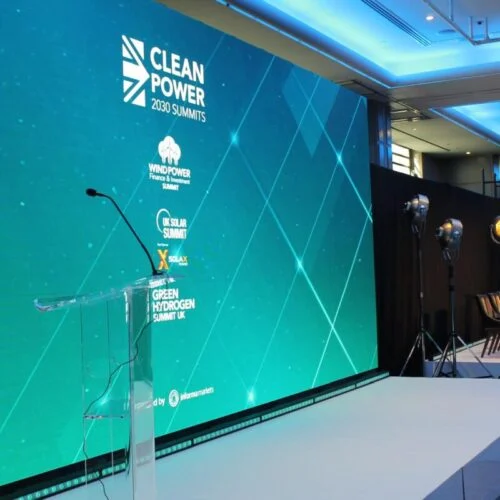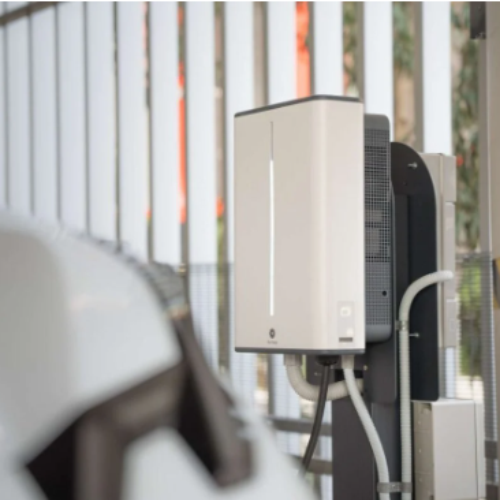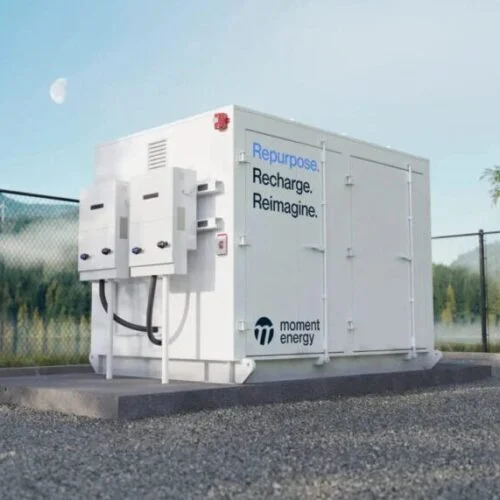June marked a period of stability for power prices in Britain, following a turbulent start to the year.
In the latest issue of Current± Price Watch series – powered by LCP Enact – we take a look back over the last month in power prices, including strong battery energy storage revenues and Britain’s role as an exporter.
Day-ahead: Period of stability after Q1 high power prices
Day-ahead prices hit a high of £373.77/MWh last week on Thursday 30 June, and a low of £127.2/MWh on 28 June.
While this was only slightly higher than the previous week – which saw a high of £354.4/MWh and a low of £114.2/MWh – it marked the highest price seen in the local day-ahead market in June.
This was due to gas making up the majority of the electricity mix every day, and was mirrored by the N2EX day-ahead market, with 30 June seeing a high of £351.39/MWh.
The period of stability for power prices currently follows the turbulency of the 2021/22 winter, with new statistics from the Department of Business, Energy and Industrial Strategy (BEIS) last week showing that domestic electricity prices increased by 17% in the first three months of 2022 in comparison with the same period in 2021, for example.
Intraday: Britain overall exporter throughout June
The APX MID intraday price hit a high of £308.01/MWh on 30 June, down from the previous week’s high of £349.66/MWh.
It hit a low of £74.38/MWh on 26 June, a moderate increase on the previous week when prices dipped to £46.71/MWh.
Over the last month, the intraday price hit its lowest on 11 June of -£20.26/MWh, and its highest point of £349.66/MWh on 30 June.
June was unusual in terms of interconnector dynamics in Britain, with the country broadly remaining an exporter throughout June as power prices on the continent remain high, in particular in France where nuclear outages have strained the system.
Imbalance: Strong demand for frequency services in June boosts storage
As with the other prices, the imbalance price in Britain hit its highest point of June on the 30th, reaching £420/MWh. It hit a low of £56/MWh on Monday, Tuesday and Wednesday of last week.
Over the past few months, revenues available in range of Dynamic ancillary services have continued to grow, bolstering the battery energy storage sector in Britain.
Indeed, June 2022 saw Dynamic Containment (Low) reach record prices, with the clearing price hitting £105/MWh on June 25 – £1 more than the previous high in April.
“June 2022 was the month where batteries achieved the highest recorded revenue through Dynamic Containment to date, almost doubling the previous amount,” said Shivam Malhotra, lead developer at LCP Enact.
“With DC prices remaining high, many batteries chose to devote the majority of their volume to this market, which caused record profits.”
“Simply, demand has remained higher than supply so far but this will change, so the market pricing of FR services is likely to deteriorate in the next month or two,” said Ben Guest, lead fund manager of Gresham House Energy Storage and head of Gresham House New Energy.
He continued to explain that demand has exceeded supply in two or three EFA blocks. Earlier this year, National Grid uncapped prices to maintain demand from batteries when Frequency Response (FR) is under-supplied.
This unlocked record revenues in these blocks in particular over the last month, reflecting the value and importance being placed on frequency services by National Grid.
The FR market has also been boosted by the launch of two new services – Dynamic Moderation (DM) and Dynamic Regulation (DR) – in 2022, following on from the launch of Dynamic Containment in 2020, which quickly became a cornerstone of many battery energy storage assets revenue stack.
“It has always been the intention of NG to phase out FFR (400+MW of demand) once the Dynamic services (DC, DM, DR) that take its place are bedded in. This has been a long process that began in 2018 with the “SNAPS” roadmap,” continued Guest.
“Now that all three products have been launched, in July NG’s demand for FFR will fall 200MW and it is likely to fall to zero at some stage in coming months (ie a further c.200MW of demand reduction). All this will see remaining FR demand well supplied in all EFA blocks most, if not all, the time and we don’t see June being easily repeatable.
“There is healthy underlying revenue potential in trading which we expect to dominate our revenues going forward.”
To find out more about LCP Enact, click here or follow them on Twitter or LinkedIn for the latest market updates.






